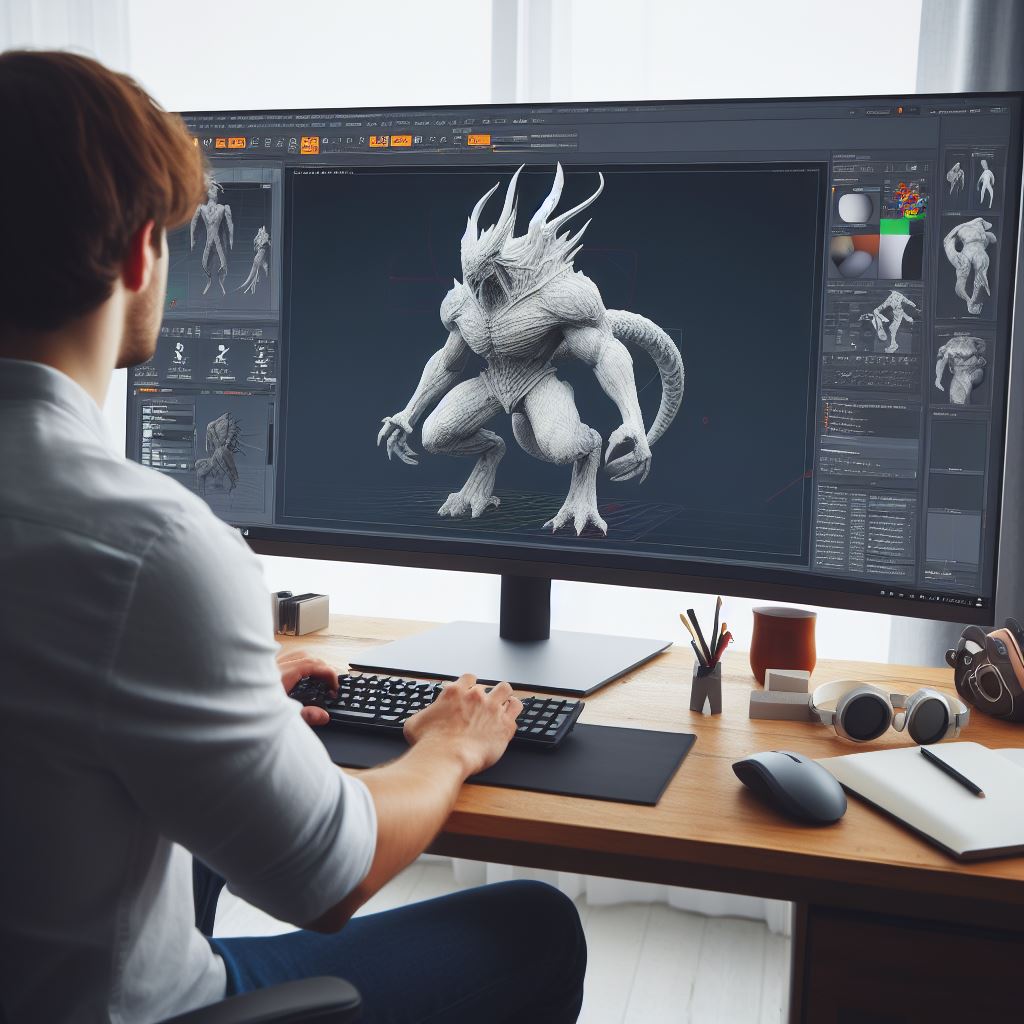
Step into the breathtaking world of 3D asset creation, where the fusion of imagination and technology transports virtual worlds to life. In this dynamic blog, we will delve into the diverse approaches utilized by artists, designers, and creators to mold and animate their digital masterpieces.
1. Traditional 3D Modeling: A Digital Sculptor’s Playground
Traditional 3D modeling is akin to a digital sculptor’s canvas. Artists harness the power of specialized software, such as Blender, Autodesk Maya, and ZBrush, to meticulously craft 3D objects from the ground up. This method offers unparalleled creative freedom, allowing artists to construct intricate models layer by layer.
Key Features:
- Vertex Manipulation: Artists manipulate individual vertices, edges, and faces to create detailed shapes.
- Texturing: Apply textures and materials to enhance the realism of the model.
- Rigging and Animation: Prepare the model for animation by adding skeletons and joints.
Pros:
- Complete artistic control.
- Ideal for custom designs and characters.
- Versatile for a wide range of industries, including gaming and animation.
Cons:
- Steeper learning curve for complex software.
- Time-consuming for highly detailed models.
2. Photogrammetry: Capturing Reality in Pixels
Overview: Photogrammetry involves capturing the real world through photographs and transforming them into 3D models. This technique is perfect for replicating real-world objects, environments, or even entire landscapes.
Key Features:
- Photo Capture: Take a series of overlapping photos from various angles.
- Point Cloud Generation: Convert photos into a 3D point cloud.
- Mesh Reconstruction: Create a detailed 3D mesh from the point cloud.
Pros:
- Realistic representation of real-world objects.
- Cost-effective with basic photography equipment.
- Used in archaeology, architecture, and virtual tourism.
Cons:
- Sensitive to lighting conditions.
- Requires careful photo planning.
3. Generative Design: Letting Algorithms Shape the Future
Overview: Generative design involves using algorithms and computer programs to create 3D models. This method emphasizes collaboration between the creator and the machine, exploring numerous design possibilities.
Key Features:
- Algorithmic Generation: Design rules and parameters guide the algorithm to create variations.
- Iterative Process: Generate multiple design options for exploration.
- Human-AI Collaboration: Combine human creativity with machine-generated suggestions.
Pros:
- Exploration of innovative and unexpected designs.
- Time-efficient for certain projects.
- Ideal for complex structures and patterns.
Cons:
- Limited control over specific details.
- Requires a good understanding of algorithmic principles.
4. 3D Scanning: Digital Cloning of the Physical World
Overview: 3D scanning involves using specialized devices to capture the physical world and convert it into digital models. This method is popular for replicating real-world objects or creating digital archives of historical artifacts.
Key Features:
- Laser or Structured Light Scanning: Capture the physical object’s surface details.
- Point Cloud Conversion: Transform the scanned data into a 3D point cloud.
- Mesh Generation: Create a detailed 3D mesh.
Pros:
- High precision and accuracy.
- Useful for preserving cultural heritage.
- Replicates real-world objects with intricate details.
Cons:
- Expensive equipment.
- Limited to capturing physical objects.
Conclusion: A Tapestry of Creativity
As technology evolves, so do the methods for crafting 3D assets. Whether you prefer the hands-on approach of traditional modeling, the realism of photogrammetry, the innovation of generative design, or the precision of 3D scanning, each method contributes to the rich tapestry of creativity in the digital realm. So, pick your tool, embark on your creative journey, and let your imagination sculpt the landscapes of tomorrow!
